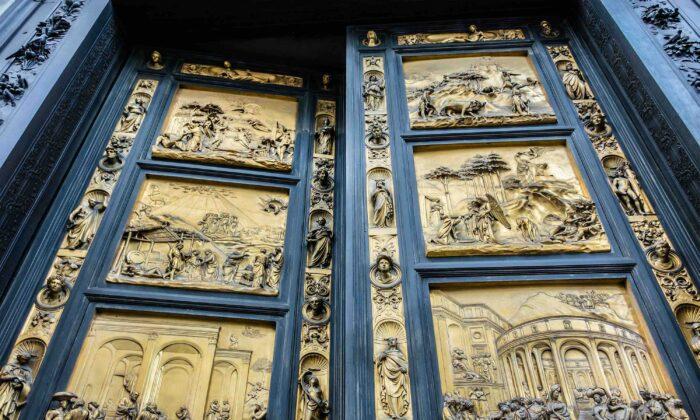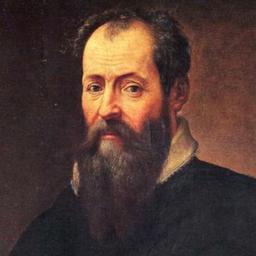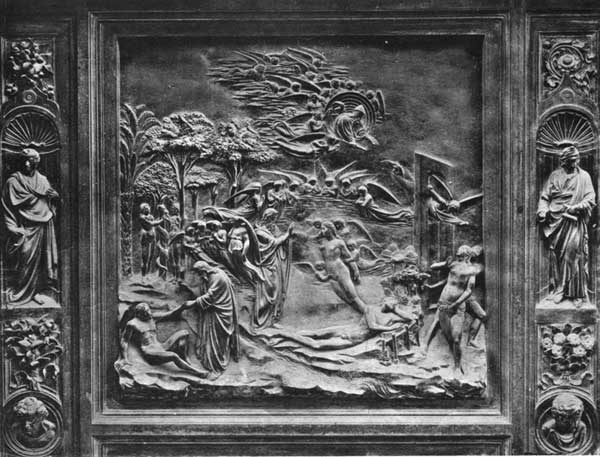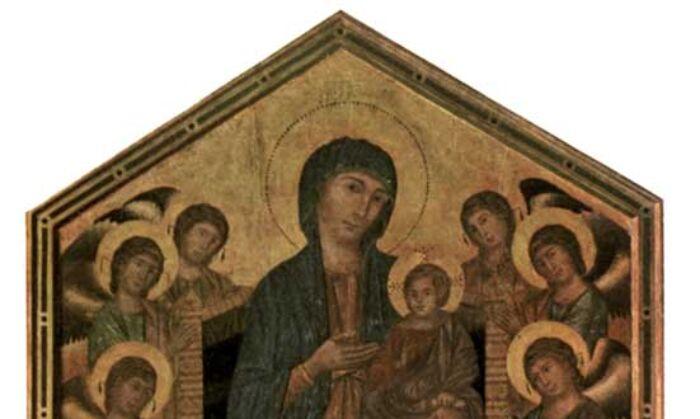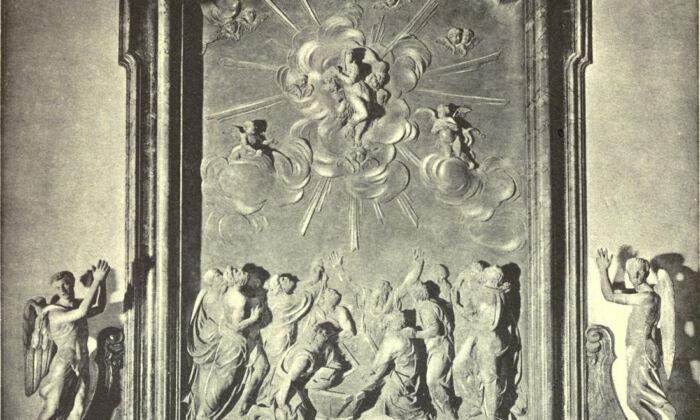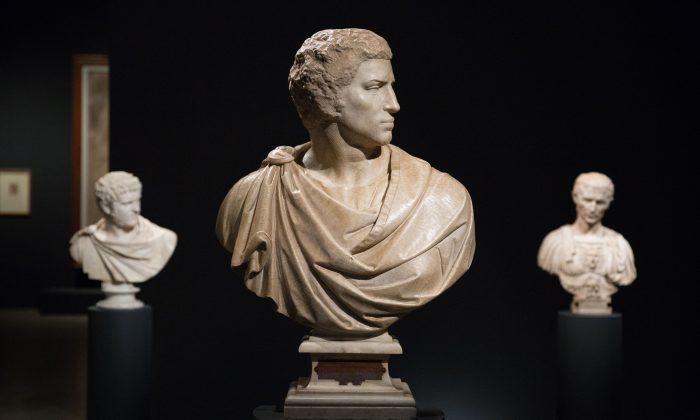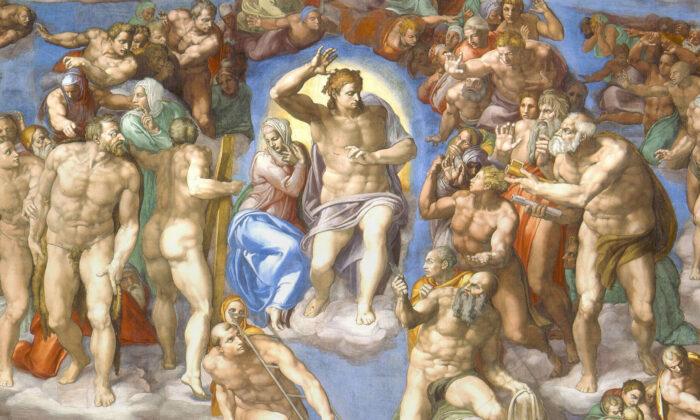There is no doubt that in every city those who, by reason of any talent, come into some fame among men, are a most blessed light and example to many who are either born after them or live in the same age, not to mention the infinite praise and the extraordinary rewards that they themselves gain thereby while living. Nor is there anything that does more to arouse the minds of men, and to render the discipline of study less fatiguing to them, than the honour and profit which are afterwards won by labouring at the arts, for the reason that these make every difficult undertaking easy to them all, and give a greater stimulus to the growth of their talents, when they are urged to greater efforts by the praises of the world. Wherefore infinite numbers of men, who feel and see this, put themselves to great fatigues, in order to attain to the honour of winning that which they see to have been won by some compatriot; and for this reason in ancient times men of talent were rewarded with riches, or honoured with triumphs and images. But since it is seldom that talent is not persecuted by envy, men must continue to the best of their power, by means of the utmost excellence, to assure it of victory, or at least to make it stout and strong to sustain the attacks of that enemy; even as Lorenzo di Cione Ghiberti, otherwise called Di Bartoluccio, was enabled to do both by his own merits and by fortune. This man well deserved the honour of being placed before themselves by the sculptor Donato and by the architect and sculptor Filippo Brunelleschi, both excellent craftsmen, since they recognized, in truth, although instinct perchance constrained them to do the contrary, that Lorenzo was a better master of casting than they were. This truly brought glory to
them, and confusion to many who, presuming on their worth, set themselves to work and occupy the place due to the talents of others, and, without producing any fruits themselves, but labouring a thousand years at the making of one work, impede and oppress the knowledge of others with malignity and with envy.
Lorenzo, then, was the son of Bartoluccio Ghiberti, and from his earliest years learnt the art of the goldsmith from his father, who was an excellent master and taught him that business, which Lorenzo grasped so well that he became much better therein than his father. But delighting much more in the arts of sculpture and design, he would sometimes handle colours, and at other times would cast little figures in bronze and finish them with much grace. He also delighted in counterfeiting the dies of ancient medals, and he portrayed many of his friends from the life in his time.
Now, while he was working with Bartoluccio and seeking to make progress in his profession, the plague came to Florence in the year 1400, as he himself relates in a book by his own hand wherein he discourses on the subject of art, which is now in the possession of the Reverend Maestro Cosimo Bartoli, a gentleman of Florence. To this plague were added civil discords and other troubles in the city, and he was forced to depart and to go in company with another painter to Romagna, where they painted for Signor Pandolfo Malatesti, in Rimini, an apartment and many other works, which were finished by them with diligence and to the satisfaction of that Lord, who, although still young, took great delight in matters of design. Meanwhile Lorenzo did not cease to study the arts of design, and to work in relief with wax, stucco, and other similar materials, knowing very well that these small reliefs are the drawing-exercises of sculptors, and that without such practice nothing can be brought by them to perfection. Now, when he had been no long time out of his own country, the pestilence ceased; wherefore the Signoria of Florence and the Guild of Merchants—since at that time sculpture had many excellent craftsmen, both foreign and Florentine—determined that there should be made, as it had been already discussed many times, the other two doors of S. Giovanni, a very ancient temple, indeed, the oldest
in that city; and they ordained among themselves that instructions should be sent to all the masters who were held the best in Italy, to repair to Florence in order that their powers might be tested by a specimen scene in bronze, similar to one of those which Andrea Pisano had formerly made for the first door.
Word of this determination was written to Lorenzo, who was working at Pesaro, by Bartoluccio, urging him to return to Florence in order to give a proof of his powers, and saying that this was an occasion to make himself known and to demonstrate his genius, not to mention that he might gain such profit that neither the one nor the other of them would ever again need to labour at making ear-rings.
The words of Bartoluccio stirred the spirit of Lorenzo so greatly, that although Signor Pandolfo, with all his Court and the other painter, kept showing him the greatest favour, Lorenzo took leave of that lord and of the painter, and they, with great unwillingness and displeasure, allowed him to go, neither promises nor increase of payment availing to detain him, since to Lorenzo every hour appeared a thousand years until he could return to Florence. Having departed, therefore, he arrived safely in his own city. Many foreigners had already assembled and presented themselves to the Consuls of the Guild, by whom seven masters were elected out of the whole number, three being Florentines and the others Tuscans; and it was ordained that they should have an allowance of money, and that within a year each man should finish a scene in bronze by way of test, of the same size as those in the first door. And for the subject they chose the story of Abraham sacrificing his son Isaac, wherein they thought that the said masters should be able to show their powers with regard to the difficulties of their art, seeing that this story contained landscapes, figures both nude and clothed, and animals, while the foremost figures could be made in full-relief, the second in half-relief, and the third in low-relief.
The competitors for this work were Filippo di Ser Brunellesco, Donato, and Lorenzo di Bartoluccio, all Florentines; Jacopo della Quercia of Siena, and Niccolò d‘Arezzo, his pupil; Francesco di Valdambrina; and Simone da Colle, called Simone de’ Bronzi. All these men promised
before the Consuls that they would deliver their scenes finished within the said time; and each making a beginning with his own, with all zeal and diligence they exerted all their strength and knowledge in order to surpass one another in excellence, keeping their work hidden and most secret, lest they should copy each other’s ideas. Lorenzo alone, who had Bartoluccio to guide him and to compel him to labour at many models before they resolved to adopt any one of them—Lorenzo alone was ever inviting the citizens, and sometimes any passing stranger who had some knowledge of the art, to see his work, in order to hear what they thought and these opinions enabled him to execute a model very well wrought and without one defect. And so, when he had made the moulds and cast the work in bronze, it came out very well; whereupon, with his father Bartoluccio, he polished it with such love and patience that nothing could be executed or finished better. And when the time came for comparing the various works, his and those of the other masters were completely finished, and were given to the Guild of Merchants for judgment; but after all had been seen by the Consuls and by many other citizens, diverse opinions were expressed about them. Many foreigners had assembled in Florence, some painters, some sculptors, and others goldsmiths; and they were invited by the Consuls to give judgment on these works, together with the other men of that profession who lived in Florence. They numbered thirty-four in all, each well experienced in his own art. Now, although there were differences of opinion among them, some liking the manner of one man and some that of another, nevertheless they were agreed that Filippo di Ser Brunellesco and Lorenzo di Bartoluccio had composed and completed their scenes better and with a richer abundance of figures than Donato had done in his, although in that one, also, there was grand design. In that of Jacopo della Quercia the figures were good, but they had no delicacy, although they were made with design and diligence. The work of Francesco di Valdambrina had good heads and was well finished, but was confused in the composition. That of Simone da Colle was a beautiful casting, because the doing of this was his art, but it had not much design. The specimen of Niccolò d'Arezzo, which was made with good mastery, had the figures squat and
was badly finished. Only that scene which Lorenzo made as a specimen, which is still seen in the Audience Chamber of the Guild of Merchants, was in every part wholly perfect. The whole work had design, and was very well composed. The figures had so graceful a manner, being made with grace and with very beautiful attitudes, and the whole was finished with so great diligence, that it appeared not made by casting and polished with tools of iron, but blown with the breath. Donato and Filippo, seeing the diligence that Lorenzo had used in his work, drew aside, and, conferring together, they resolved that the work should be given to Lorenzo, it appearing to them that thus both the public and the private interest would be best served, and that Lorenzo, being a young man not more than twenty years of age, would be able to produce by this exercise of his profession those greater fruits that were foreshadowed by the beautiful scene which he, in their judgment, had executed more excellently than the others; saying that there would have been more sign of envy in taking it from him, than there was justice in giving it to him.
Beginning the work of that door, then, for that entrance which is opposite to the Office of Works of S. Giovanni, Lorenzo made for one part of it a large framework of wood, of the exact size that it was to be, with mouldings, and with the ornaments of the heads at the corners, round the various spaces wherein the scenes were to be placed, and with those borders that were to go round them. Having then made and dried the mould with all diligence, he made a very great furnace (that I remember seeing) in a room that he had hired opposite to S. Maria Nuova, where to-day there is the Hospital of the Weavers, on the spot that was called the Aia, and he cast the said framework in bronze. But, as chance would have it, it did not come out well; wherefore, having realized the mischief, without losing heart or giving way to depression, he promptly made another mould and cast it again, without telling anyone about it, and it came out very well. Whereupon he went on and continued the whole work in this manner, casting each scene by itself, and putting it, when finished, into its place. The arrangement of the scenes was similar to that which Andrea Pisano had formerly made in the first door, which Giotto designed for him. He made therein
twenty scenes from the New Testament; and below, in eight spaces similar to these, after the said scenes, he made the four Evangelists, two on each side of the door, and likewise the four Doctors of the Church, in the same manner; which figures are all different in their attitudes and their draperies. One is writing, another is reading, others are in contemplation, and all, being varied one from another, appear lifelike and very well executed; not to mention that in the framework of the border surrounding the scenes in squares there is a frieze of ivy leaves and other kinds of foliage, with mouldings between each; and on every corner is the head of a man or a woman in the round, representing prophets and sibyls, which are very beautiful, and demonstrate with their variety the excellence of the genius of Lorenzo. Above the aforesaid Doctors and Evangelists, which are in the four squares below, there follows, on the side towards S. Maria del Fiore, the first scene; and here, in the first square, is the Annunciation of Our Lady, wherein, in the attitude of the Virgin, he depicted terror and a sudden alarm, as she turns away gracefully by reason of the coming of the Angel. And next to this he made the Nativity of Christ, wherein the Madonna, having given birth to Him, is lying down and taking repose; with Joseph in contemplation, the shepherds, and the Angels singing. In the scene next to this, on the other half of the door, on the same level, there follows the story of the coming of the Magi, and of their adoration of Christ, while they give Him their tribute; and their Court is following them, with horses and other equipage, wrought with great genius. And beside this, likewise, there is His Disputation with the Doctors in the Temple, wherein the admiration and the attention which the Doctors give to Christ are no less well expressed than the joy of Mary and Joseph at finding Him again. Above these—beginning again over the Annunciation—there follows the story of the Baptism of Christ by John in the Jordan, wherein there are seen in their gestures the reverence of the one and the faith of the other. Beside this there follows the Temptation of Christ by the Devil, who, terrified by the words of Jesus, stands in an attitude of terror, showing thereby that he knows Him to be the Son of God. Next to this, on the other side, is the scene where He is
driving the traders from the Temple, overturning their money and the victims, doves, and other merchandise; wherein the figures, falling over each other, have a very beautiful and well conceived grace in their headlong flight. Next to this Lorenzo placed the shipwreck of the Apostles, wherein S. Peter is issuing from the ship and is sinking into the water, and Christ is upholding him. This scene shows an abundance of various gestures in the Apostles, who are toiling to save the ship; and the faith of S. Peter is recognized in his coming towards Christ. Beginning again above the story of the Baptism, on the other side, there is His Transfiguration on Mount Tabor, wherein Lorenzo demonstrated, in the attitudes of the three Apostles, how celestial visions dazzle the eyes of mortals; even as the Divinity of Christ is also recognized as He holds His head high and His arms outstretched, between Elias and Moses. And next to this is the Resurrection of the dead Lazarus, who, having issued from the sepulchre, is standing upright with his feet and his hands bound, to the marvel of the bystanders. Martha is there, with Mary Magdalene, who is kissing the feet of the Lord with very great humility and reverence. Beside this, on the other half of the door, there follows the scene when He rides on an ass into Jerusalem, while the children of the Hebrews, in various attitudes, are casting their garments on the ground, with the olives and palms; not to mention the Apostles, who are following the Saviour. And next to this is the Last Supper, very beautiful and well composed, the Apostles being placed at a long table, half on the near side and half on the farther side. Above the scene of the Transfiguration there is the Prayer in the Garden, wherein the three Apostles are seen asleep in various attitudes. And beside this there follows the scene when He is taken and Judas kisses Him, wherein there are many things worthy of consideration, since we see therein both the Apostles, who are flying, and the Jews, who, in taking Christ, are making most violent gestures and efforts. On the other side, next to this, is the scene when He is bound to the Column, wherein is the figure of Jesus Christ writhing not a little with the pain of the blows, in a pitiful attitude, while there are seen, in those gestures that the Jews who are scourging Him are making, terrible rage and lust of vengeance. Next
to this there follows the leading of Christ before Pilate, who washes his hands and condemns Him to the Cross. Above the Prayer in the Garden, on the other side and in the last row of scenes, is Christ bearing His Cross and going to His death, led by a crowd of soldiers, who appear, with strange attitudes, to be dragging Him by force; besides the gestures of sorrow and lamentation that the Maries are making, insomuch that one who was present could not have seen them better. Beside this he made Christ on the Cross, and Our Lady and S. John the Evangelist seated on the ground, with gestures full of sorrow and wrath. Next to this, on the other side, there follows His Resurrection, wherein the guards, stunned by the thunder, are lying like dead men, while Christ is ascending on high in such an attitude that He truly appears glorified, by reason of the perfection of His beautiful limbs, wrought by the most ingenious industry of Lorenzo. In the last space is the coming of the Holy Spirit, wherein are very sweet expressions and attitudes in those who are receiving it.
This work was brought to that completion and perfection without sparing any labour or time that could be devoted to a work in bronze, seeing that the limbs of the nudes are most beautiful in every part; and in the draperies, although they hold a little to the old manner of Giotto’s time, there is a general feeling that inclines to the manner of the moderns, and produces, in figures of that size, a certain very lovely grace. And in truth the composition of each scene is so well ordered and so finely arranged, that he rightly deserved to obtain that praise which Filippo had given him at the beginning—nay, even more. And in like manner he gained most honourable recognition among his fellow-citizens, and was consummately extolled by them and by the native and foreign craftsmen. The cost of this work, with the exterior ornaments, which are also of bronze, wrought with festoons of fruits and with animals, was 22,000 florins, and the bronze door weighed 34,000 libbre.
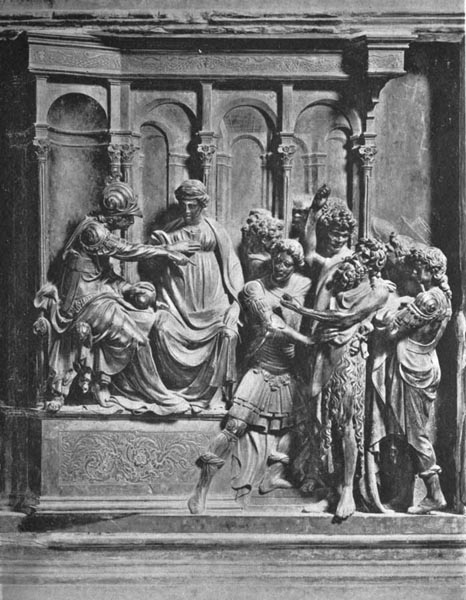
S. John Before Herod
(After Lorenzo Ghiberti. Siena: Baptistery)
Alinari
This work finished, it appeared to the Consuls of the Guild of Merchants that they had been very well served, and by reason of the praises given by all to Lorenzo they determined that he should make a statue of
bronze, four braccia and a half high, in memory of S. John the Baptist, on a pilaster without Orsanmichele, in one of the niches there—namely, the one facing the Cloth-dressers. This he began, nor did he ever leave it until he delivered it finished. It was and still is a work highly praised, and in it, on the mantle, he made a border of letters, wherein he wrote his own name. In this work, which was placed in position in the year 1414, there is seen the beginning of the good modern manner, in the head, in an arm which appears to be living flesh, in the hands, and in the whole attitude of the figure. He was thus the first who began to imitate the works of the ancient Romans, whereof he was an ardent student, as all must be who desire to do good work. And in the frontal of that shrine he tried his hand at mosaic, making therein a half-length prophet.
The fame of Lorenzo, by reason of his most profound mastery in casting, had now spread throughout all Italy and abroad, insomuch that Jacopo della Fonte, Vecchietto of Siena, and Donato having made for the Signoria of Siena some scenes and figures in bronze that were to adorn the baptismal font of their Church of S. Giovanni, the people of Siena, having seen the works of Lorenzo in Florence, came to an agreement with him and caused him to make two scenes from the life of S. John the Baptist. In one he made S. John baptizing Christ, accompanying it with an abundance of figures, both nude and very richly draped; and in the other he made S. John being taken and led before Herod. In these scenes he surpassed and excelled the men who had made the others; wherefore he was consummately praised by the people of Siena, and by all others who have seen them.
The Masters of the Mint in Florence had a statue to make for one of those niches that are round Orsanmichele, opposite to the Guild of Wool, and it was to be a S. Matthew, of the same height as the aforesaid S. John. Wherefore they allotted it to Lorenzo, who executed it to perfection; and it was much more praised than the S. John, for he made it more in the modern manner. This statue brought it about that the Consuls of the Guild of Wool determined that he should make in the same place, for the niche next to that, a statue likewise in bronze,
which should be of the same proportions as the other two, representing S. Stephen, their Patron Saint. And he brought it to completion, giving a very beautiful varnish to the bronze; and this statue gave no less satisfaction than the other works already wrought by him.
The General of the Preaching Friars at that time, Maestro Lionardo Dati, wishing to leave a memorial of himself to his country in S. Maria Novella, where he had taken his vows, caused Lorenzo to construct a tomb of bronze, with himself lying dead thereon, portrayed from nature; and this tomb, which was admired and extolled, led to another being erected by Lodovico degli Albizzi and Niccolò Valori in S. Croce.
After these things, Cosimo and Lorenzo de' Medici, wishing to honour the bodies and relics of the three martyrs, Protus, Hyacinthus, and Nemesius, had them brought from the Casentino, where they had been held in little veneration for many years, and caused Lorenzo to make a sarcophagus of bronze, in the middle of which are two angels in low-relief who are holding a garland of olive, within which are the names of those martyrs; and they caused the said relics to be put into the said sarcophagus, which they placed in the Church of the Monastery of the Angeli in Florence, with these words below, carved in marble, on the side of the church of the monks:
CLARISSIMI VIRI COSMAS ET LAURENTIUS FRATRES NEGLECTAS DIU
SANCTORUM RELIQUIAS MARTYRUM RELIGIOSO STUDIO AC FIDELISSIMA
PIETATE SUIS SUMPTIBUS ÆREIS LOCULIS CONDENDAS COLENDASQUE
CURARUNT.
And on the outer side, facing the little church in the direction of the street, below a coat of arms of balls, there are these other words carved on marble:
HIC CONDITA SUNT CORPORA SANCTORUM CHRISTI MARTYRUM PROTI ET
HYACINTHI ET NEMESII, ANN. DOM. 1428.
And by reason of this work, which succeeded very nobly, there came a wish to the Wardens of Works of S. Maria del Fiore to have a sarcophagus and tomb of bronze made to contain the body of S. Zanobi, Bishop of Florence. This tomb was three braccia and a half in length,
and two in height; and besides adorning it with diverse varied ornaments, he made therein on the front of the body of the sarcophagus itself a scene with S. Zanobi restoring to life a child which had been left in his charge by the mother, and which had died while she was on a pilgrimage. In a second scene is another child, who has been killed by a wagon, and also the Saint restoring to life one of the two servants sent to him by S. Ambrose, who had been left dead on the Alps; and the other is there, making lamentation in the presence of S. Zanobi, who, seized with compassion, said: “Go, he doth but sleep; thou wilt find him alive.” And at the back are six little angels, who are holding a garland of elm-leaves, within which are carved letters in memory and in praise of that Saint. This work he executed and finished with the utmost ingenuity and art, insomuch that it received extraordinary praise as something beautiful.
The while that the works of Lorenzo were every day adding lustre to his name, by reason of his labouring and serving innumerable persons, working in bronze as well as in silver and gold, it chanced that there fell into the hands of Giovanni, son of Cosimo de' Medici, a very large cornelian containing the flaying of Marsyas by command of Apollo, engraved in intaglio; which cornelian, so it is said, once served the Emperor Nero for a seal. And it being something rare, by reason both of the size of the stone, which was very great, and of the marvellous beauty of the intaglio, Giovanni gave it to Lorenzo, to the end that he might make a gold ornament in relief round it; and he, after toiling at it for many months, finished it completely, making round it a work in relief of a beauty not inferior to the excellence and perfection of the intaglio on the stone; which work brought it about that he wrought many other things in gold and silver, which to-day are not to be found. For Pope Martin, likewise, he made a gold button which he wore in his cope, with figures in full-relief, and among them jewels of very great price—a very excellent work; and likewise a most marvellous mitre of gold leaves in open-work, and among them many little figures in full-relief, which were held very beautiful. And for this work, besides the name, he acquired great profit from the liberality of that Pontiff. In the year
1439, Pope Eugenius came to Florence—where the Council was held—in order to unite the Greek Church with the Roman; and seeing the works of Lorenzo, and being no less pleased with his person than with the works themselves, he caused him to make a mitre of gold, weighing fifteen libbre, with pearls weighing five libbre and a half, which, with the jewels set in the mitre, were estimated at 30,000 ducats of gold. It is said that in this work were six pearls as big as filberts, and it is impossible to imagine, as was seen later in a drawing of it, anything more beautiful and bizarre than the settings of the jewels and the great variety of children and other figures, which served for many varied and graceful ornaments. For this work he received infinite favours from that Pontiff, both for himself and his friends, besides the original payment.
Florence had received so much praise by reason of the excellent works of this most ingenious craftsman, that the Consuls of the Guild of Merchants determined to commission him to make the third door of S. Giovanni, likewise in bronze. Now, in the door that he had made before, he had followed their directions and had made it with that ornament which goes round the figures, and which encircles the framework of both parts of the door, as in the one of Andrea Pisano; but on seeing how greatly Lorenzo had surpassed him, the Consuls determined to remove that of Andrea from its position in the centre, and to place it in the doorway that is opposite to the Misericordia, and to commission Lorenzo to make a new door to be placed in the centre, looking to him to put forth the greatest effort of which he was capable in that art. And they placed themselves in his hands, saying that they gave him leave to make it as he pleased, and in whatsoever manner he thought it would turn out as ornate, as rich, as perfect, and as beautiful as it could be made or imagined; nor was he to spare time or expense, to the end that, even as he had surpassed all other sculptors up to his own time, he might surpass and excel all his own previous works.
Lorenzo began the said work, putting therein all the knowledge that he could; wherefore he divided the said door into ten squares, five on each side, so that the spaces enclosing the scenes were one braccio and a
third in extent, and round them, to adorn the framework that surrounds the scenes, there are niches—upright, in that part of the door—containing figures in almost full-relief, twenty in number and all most beautiful, such as a nude Samson, who, embracing a column, with a jawbone in his hand, displays a perfection as great as can be shown by anything made in the time of the ancients, in their figures of Hercules, whether in bronze or in marble; and to this a Joshua bears witness, who, in the act of speaking, appears to be really addressing his army; besides many prophets and sibyls, all of which he adorned with various manners of draperies over their shoulders, and with head-dresses, hair, and other adornments; not to mention twelve figures which are lying down in the niches that go horizontally along the ornament of the scenes. At the intersections of the corners, in certain medallions, he made heads of women, of youths, and of old men, to the number of thirty-four; among which, in the middle of the said door, near the place where he engraved his own name, is the portrait of his father Bartoluccio, who is the oldest of them, while the youngest is his son Lorenzo himself, the master of the whole work; besides an infinite quantity of foliage, mouldings, and other ornaments, made with the greatest mastery. The scenes that are in the said door are from the Old Testament; and in the first is the Creation of Adam, and of Eve, his wife, who are executed most perfectly, it being evident that Lorenzo strove to make their limbs as beautiful as he was able to do, wishing to show that, even as these figures by the hand of God were the most beautiful that were ever made, so these by his own hand should surpass all the others that had been made by him in his other works—truly a very grand intention. In the same scene, likewise, he made them eating the apple, and also being driven out of Paradise; and in these actions the figures express the effect, first of their sin, recognizing their nakedness and covering it with their hands, and then of repentance, when they are made by the Angel to go forth out of Paradise. In the second square are figures of Adam and Eve, with Cain and Abel as little children, born from them; and there, also, is Abel making a sacrifice of his firstlings, with Cain making one not so good, while in the expression of Cain there is shown envy against his
brother, and in Abel love towards God. And what is singularly beautiful is to see Cain ploughing the earth with a pair of oxen, which, with their labouring to pull at the yoke of the plough, appear real and natural; and the same is shown in Abel, who is watching his flocks, and Cain puts him to death, when he is seen, in a most impious and cruel attitude, slaughtering his brother with a club, in such a manner that the very bronze shows the limpness of the dead limbs in the most beautiful person of Abel; and in the distance, likewise, there is God asking Cain what he has done with Abel. Each square contains the representation of four stories. In the third square Lorenzo made Noah issuing from the Ark, with his wife, his sons and daughters, and his sons’ wives, together with all the animals, both of the air and of the earth, which, each in its kind, are wrought with the greatest perfection wherewith art is able to imitate nature; the Ark is seen open, with the poles in perspective, in very low-relief, insomuch that their grace cannot be expressed; besides that, the figures of Noah and of his kindred could not be more lively or more vivacious, while, as he is offering sacrifice, there is seen the rainbow, a sign of peace between God and Noah. But much more excellent than all the others are the scenes where he is planting the vine, and, having been made drunk by the wine, is showing his nakedness, and his son Ham is deriding him; and in truth a man sleeping could not be imitated better, the limbs being seen outstretched in drunken abandonment, while his other two sons, with consideration and love, are covering him in very beautiful attitudes; not to mention that there are the cask, the vine-leaves, and the other features of the vintage, so carefully made and fitted into certain places, that they do not impede the story, but serve as a most beautiful adornment. In the fourth scene it pleased Lorenzo to make the apparition of the three Angels in the valley of Mamre, giving them a close likeness one to the other, while that most holy patriarch is seen adoring them, with much appropriateness and vivacity in the position of his hands and the expression of his countenance; and, in addition, Lorenzo showed very beautiful feeling in the figures of his servants, who, remaining at the foot of the mountain with an ass, are awaiting Abraham, who had gone to sacrifice his son. Isaac is
placed naked on the altar, and his father, with uplifted arm, is about to show his obedience, but he is hindered by the Angel, who is restraining him with one hand, while with the other he is pointing to where is the ram for the sacrifice, and delivering Isaac from death. This scene is truly very beautiful, since, among other things, there is seen a very great difference between the delicate limbs of Isaac and those of the servants, which are more robust; insomuch that there appears to be no touch therein that was not given with the greatest art. In this work, also, Lorenzo showed that he surpassed his own self in the difficulties of making buildings; in the birth-scene of Isaac, Jacob, and Esau; in the scene when Esau is hunting, at the wish of his father; and in that when Jacob, instructed by Rebecca, is offering the cooked kid, with its skin wrapped round his neck, while Isaac is feeling for him and giving him his blessing. In this scene there are some dogs, very beautiful and lifelike, besides the figures, which produce the very same effect that Jacob, Isaac, and Rebecca did by their actions when they were alive.
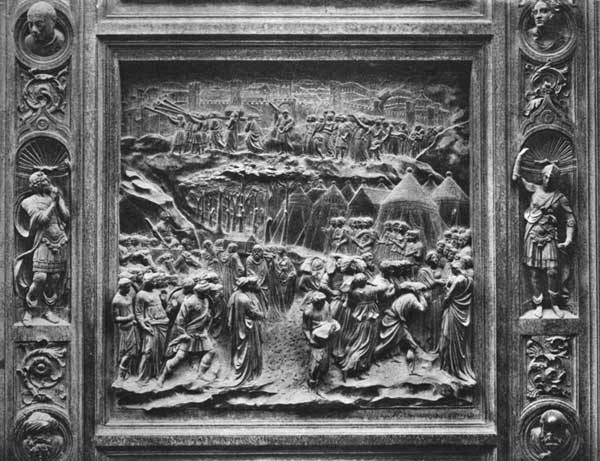
The Fall of Jericho
(Detail, after Lorenzo Ghiberti, from the Paradise Gate of the Baptistery, Florence)
Brogi
The Creation of Eve
(Detail, after Lorenzo Ghiberti, from the Paradise Gate of the Baptistery, Florence)
Brogi
Emboldened by his study of the art, which was making it ever easier to him, he tried his genius on matters more complicated and difficult; wherefore, in the sixth square, he made Joseph cast by his brethren into the well, and the scene when they sell him to the merchants, and where he is given by them to Pharaoh, to whom he interprets the dream of the famine; together with the provision against it, and the honours given by Pharaoh to Joseph. Likewise there is Jacob sending his sons for corn into Egypt, and Joseph recognizing them and making them return for their father; in which scene Lorenzo made a round temple, drawn in perspective with great mastery, wherein are figures in diverse manners which are loading corn and flour, together with some marvellous asses. Likewise there is the feast that Joseph gives them, and the hiding of the gold cup in Benjamin’s sack, and its discovery, and how he embraces and acknowledges his brethren; which scene, by reason of the many effects and the great variety of incidents, is held the most noble, the most difficult, and the most beautiful of all his works.
And in truth, having so beautiful a genius and so good a grace in this manner of statuary, when there came into his mind the compositions
of beautiful scenes, Lorenzo could not but make the figures most beautiful; as it is apparent in the seventh square, where he represents Mount Sinai, and on its summit Moses, who is receiving the Laws from God. Reverently kneeling, half-way up the mountain, is Joshua, who is awaiting him, and at the foot are all the people, terrified by the thunder, lightning, and earthquakes, in diverse attitudes wrought with very great vivacity. After this, he showed diligence and great love in the eighth square, wherein he made Joshua marching against Jericho and turning back the Jordan, and placed there the twelve tents of the twelve Tribes, full of very lifelike figures; but more beautiful are some in low-relief, in the scene when, as they go with the Ark round the walls of the aforesaid city, these walls fall down at the sound of trumpets, and the Hebrews take Jericho; and here the landscape is ever diminished and made lower with great judgment, from the first figures to the mountains, from the mountains to the city, and from the city to the distant part of the landscape, in very low relief, the whole being executed with great perfection. And since Lorenzo became from day to day more practised in that art, there is next seen, in the ninth square, the slaying of the giant Goliath by David, who is cutting off his head in a proud and boyish attitude; and the host of the Lord is routing that of the Philistines, wherein Lorenzo made horses, chariots, and other warlike things. Next, he made David returning with the head of Goliath in his hand, and the people are meeting him, sounding instruments and singing; and these effects are all appropriate and vivacious. It now remained for Lorenzo to do all that he was able in the tenth and last scene, wherein the Queen of Sheba is visiting Solomon, with a very great train; in this part he made a very beautiful building drawn in perspective, with all the other figures similar to the aforesaid scenes; not to mention the ornaments of the architraves, which go round the said doors, wherein are fruits and festoons made with his usual excellence.
In this work, both in detail and as a whole, it is seen how much the ability and the power of a craftsman in statuary can effect by means of figures, some being almost in the round, some in half-relief, some in low-relief, and some in the lowest, with invention in the grouping of the
figures, and extravagance of attitude both in the males and in the females; and by variety in the buildings, by perspectives, and by having likewise shown a sense of fitness in the gracious expressions of each sex throughout the whole work, giving to the old gravity, and to the young elegance and grace. And it may be said, in truth, that this work is in every way perfect, and that it is the most beautiful work which has ever been seen in the world, whether ancient or modern. And right truly does Lorenzo deserve to be praised, seeing that one day Michelagnolo Buonarroti, having stopped to look at this work, and being asked what he thought of it, and whether these doors were beautiful, answered: “They are so beautiful that they would do well for the gates of Paradise”: praise truly appropriate, and given by an able judge. And well indeed might Lorenzo complete them, seeing that from the age of twenty, when he began them, he worked at them for forty years, with labour beyond belief.
Lorenzo was assisted in finishing and polishing this work, after it was cast, by many men, then youths, who afterwards became excellent masters—namely, by Filippo Brunelleschi, Masolino da Panicale, and Niccolò Lamberti, goldsmiths; and by Parri Spinelli, Antonio Filarete, Paolo Uccello, Antonio del Pollaiuolo, who was then quite young, and many others, who, growing intimate together over that work, and conferring one with another, as men do when they work in company, gained no less advantage for themselves than they gave to Lorenzo. To him, besides the payment that he had from the Consuls, the Signoria gave a good farm near the Abbey of Settimo, and no long time elapsed before he was made one of the Signori, and honoured with the supreme magistracy of the city; wherefore the Florentines deserve no less to be praised for their gratitude to him, than they deserve to be blamed for having been little grateful to other excellent men of their city.
After this most stupendous work, Lorenzo made the ornament in bronze for that door of the same church which is opposite to the Misericordia, with that marvellous foliage which he was not able to finish, death coming unexpectedly upon him when he was preparing—having already almost made the model—to reconstruct the said door,
which Andrea Pisano had formerly made; which model has now been lost, although I saw it formerly, when a youth, in Borgo Allegri, before it was allowed to be lost by the descendants of Lorenzo.
Lorenzo had a son called Bonaccorso, who finished with his own hand the frieze and that ornament, which had been left incomplete, with very great diligence; which ornament, I declare, is the rarest and most marvellous work that there is to be seen in bronze. Bonaccorso, dying young, did not afterwards make many works, as he would have done, seeing that he had been left with the secret of making castings in such a way as to make them come out delicate, and also with the knowledge and the method of perforating the metal in that manner which is seen in the works left by Lorenzo. The latter, besides the works by his own hand, bequeathed to his heirs many antiquities both in marble and in bronze, such as the bed of Polycletus, which was something very rare; a leg of bronze as large as life; some heads, both male and female; together with some vases, all procured by him from Greece at no small cost. He left, likewise, some torsi of figures, and many other things; and all were dispersed together with the property of Lorenzo, some being sold to Messer Giovanni Gaddi, then Clerk of the Chamber to the Pope, and among these was the said bed of Polycletus, with the rest of the finer things.
Bonaccorso had a son called Vittorio, who survived him. He applied himself to sculpture, but with little profit, as it is shown by the heads that he made at Naples for the Palace of the Duke of Gravina, which are not very good, since he never applied himself to art with love or with diligence, but rather to scattering the property and the other things which had been left him by his father and his grandfather. Finally, going to Ascoli as architect under Pope Paul III, he had his throat cut one night by one of his servants, who came to rob him. And thus the family of Lorenzo became extinct, but not so his fame, which will live to all eternity.
But returning to the said Lorenzo: he applied himself, while he lived, to many things, and delighted in painting and in working in glass, and for S. Maria del Fiore he made the round windows that are round the
cupola, excepting one, which is by the hand of Donato—namely, the one wherein Christ is crowning Our Lady. Lorenzo likewise made the three that are over the principal door of the same S. Maria del Fiore, and all those of the chapels and of the tribunes, and also the rose-window in the façade of S. Croce. In Arezzo he made a window for the principal chapel of the Pieve, containing the Coronation of Our Lady, with two other figures, for Lazzaro di Feo di Baccio, a very rich merchant; but since they were all of Venetian glass, loaded with colour, they make the places where they were put rather dark than otherwise. Lorenzo was chosen to assist Brunellesco, when the latter was commissioned to make the Cupola of S. Maria del Fiore, but he was afterwards relieved of the task, as it will be told in the Life of Filippo.
The same Lorenzo wrote a book in the vulgar tongue, wherein he treated of many diverse matters, but in such wise that little profit can be drawn from it. The only good thing in it, in my judgment, is this, that after having discoursed of many ancient painters, and particularly of those cited by Pliny, he makes brief mention of Cimabue, Giotto, and many others of those times; and this he did, with much more brevity than was right, for no other reason but to slip with a good grace into a discourse about himself, and to enumerate minutely, as he did, one by one, all his own works. Nor will I forbear to say that he feigns that his book was written by another, whereas afterwards, in the process of writing—as one who knew better how to draw, to chisel, and to cast in bronze, than how to weave stories—talking of himself, he speaks in the first person, “I made,” “I said,” “I was making,” “I was saying.” Finally, having come to the sixty-fourth year of his age, and being assailed by a grievous and continuous fever, he died, leaving immortal fame for himself by reason of the works that he made, and through the pens of writers; and he was honourably buried in S. Croce. His portrait is on the principal bronze door of the Church of S. Giovanni, on the border that is in the middle when the door is closed, in the form of a bald man, and beside him is his father Bartoluccio; and near them may be read these words:
LAURENTII CIONIS DE GHIBERTIS MIRA ARTE FABRICATUM. The drawings of Lorenzo were most excellent, being made with much relief, as it is
seen in our book of drawings, in an Evangelist by his hand, and in some others in chiaroscuro, which are very beautiful.
His father Bartoluccio was also a passing good draughtsman, as it is shown by another Evangelist in the said book, which is by his hand, but no little inferior to that of Lorenzo. These drawings, with some by Giotto and by others, I had from Vittorio Ghiberti in the year 1528, when a youth, and I have ever held and still hold them in veneration, both because they are beautiful and as memorials of men so great. And if, when I was living in strait friendship and intimacy with Vittorio, I had known what I know now, it would have been easy for me to obtain many other truly beautiful things by the hand of Lorenzo. Among many verses, both in Latin and in the vulgar tongue, which were written at diverse times in honour of Lorenzo, it will be enough for me, in order not to weary my readers overmuch, to put down these that follow
Dum cernit valvas aurato ex aere nitentes
In templo Michael Angelus, obstupuit:
Attonitusque diu, sic alta silentia rupit:
O divinum opus! O janua digna polo!

